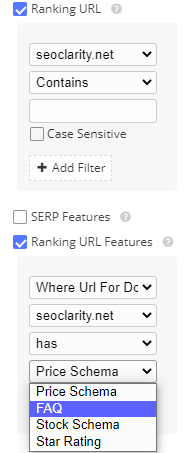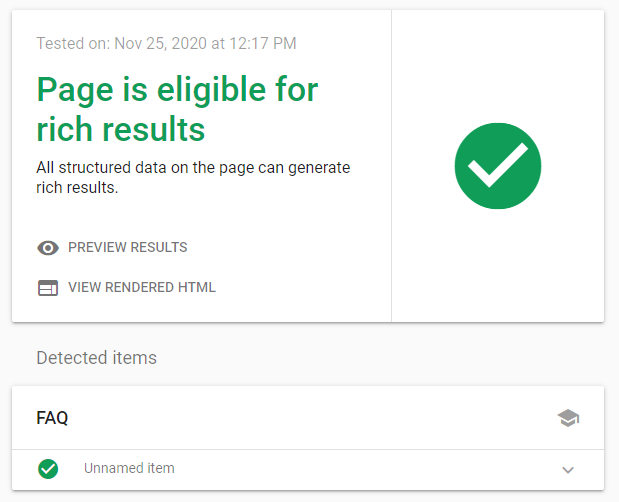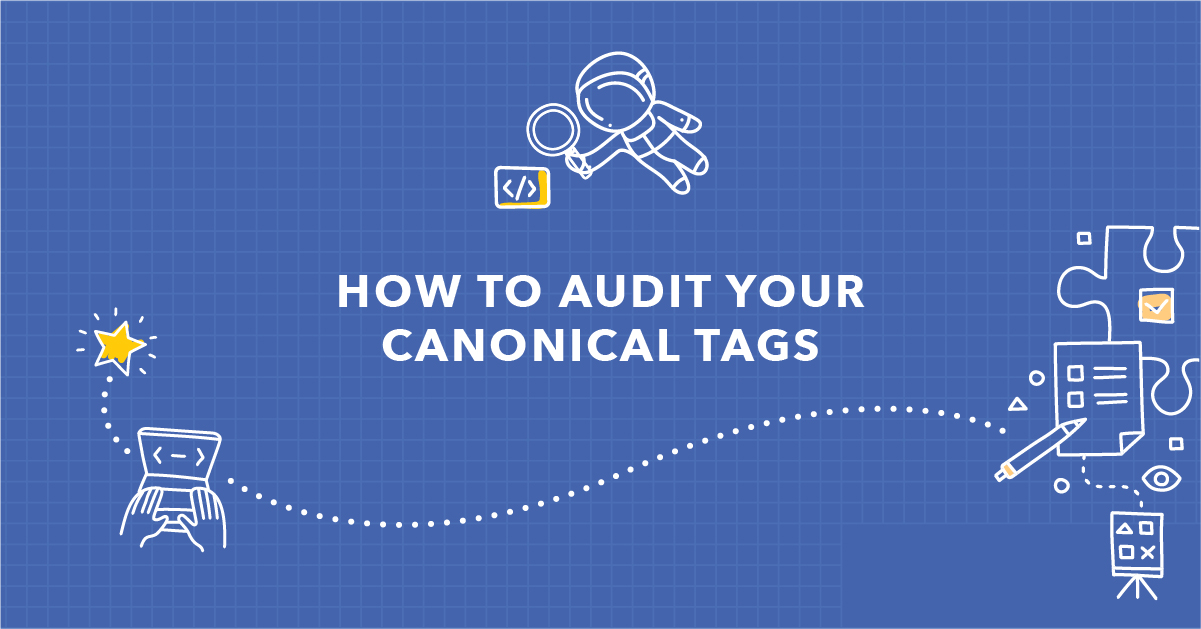If you’ve been building structured data using our schema builder tool, you’ve joined a community of thousands of users who have captured greater search visibility with ease.
Schema Builder provides users with the ability to easily build validated JSON-LD structured data markup for any webpage, based on schema.org specification.
Combined with Schema Optimizer, SEOs can now deploy structured data to thousands of pages with just a few clicks.
It comes as no surprise, however, that a topic like SEO schema markup comes with some questions. One interesting use case came to us recently where a client asked,
How long does it take for FAQ schema to improve visibility in the SERP and subsequently improve CTR for a specific page?”
We set out to solve this challenge with a test on our own pages.
Importance of Schema Markup
We’ve covered how structured data can help your site’s search visibility before, but as a refresher, schema (otherwise known as structured data) is a set of tags that you include within your page code to provide the user with more information about its content.
This helps with a couple of things:
- Gives the user a better understanding your page’s content
- Enhances your search listing in search results
Some of the most commonly seen examples of structured data in the SERPs (search engine results page) are:
- Contact information in the Knowledge Panel
- Links to a company's social profiles within the Knowledge Graph
- Local business information, crucial for local SEO strategies
- Product and review information
As one might be able to determine, structured data provides context right within the SERP, making it easier for a user to decide where to click.
A more visible listing will receive more attention, after all. With that said, implementing structured data with our schema markup generator is one of the easiest ways to further optimize your already high ranking results.
Our FAQ Schema Tests: Improving Keyword Visibility and CTR
Test #1: Optimizing Content and Applying Schema
For our first test, we decided to show the value of FAQ Schema was by taking an already ranking term and adding FAQ schema to its associated blog post.
For the purposes of this test, we chose the term best seo platform(s) which, at the start of the test was ranking 5 and did not appear above the fold.
(Our result for “best SEO platform” on September 14, 2020. We were in position 5 in the SERP.)
The target page for this term is our blog about the best SEO platforms. This page, while ranking in the top 10 for its target term, needed some improvement to appear at the top of the SERP.
Additionally, we wanted to see if we could also improve the CTR for this blog post.
We used the following methodology to determine the best way to test the FAQ schema implementation.
Methodology
First, we used Search Analytics in the seoClarity platform to quickly look up question words using a simple RegEx pattern specific to the post in our test. Question words like how, why, and what as well as words with informational intent like see and find were included in this pattern.
This helped us see what was receiving impressions and what users were searching for in finding this blog post. The phrases and terms with the highest impressions year-to-date (January 1 to present) were included in our FAQ schema test.
From there, we also included any questions that appeared in the People Also Ask feature within Content Fusion, our AI SEO content writing tool.
The phrases here matched the high impression phrases from Search Analytics and we noticed a few other questions that we did not discover in our initial research.
We narrowed our frequently asked questions for test down to the following:
- What are SEO platforms? [IN TEXT as “What is an SEO platform?”]
- What is the difference between a platform and a tool? [IN TEXT]
- What should be included in every SEO platform? [IN TEXT]
- How to choose SEO software [NOT IN TEXT]
- What is the best SEO software? [NOT IN TEXT]
For the phrases above that were listed as “not in text”, we looked again to Content Fusion to add sections to our content to ensure that all of the suggested terms and phrases were used within the content.
Once everything was ensured to be optimized for the target term without structured data markup, we turned to the schema builder tool to implement our FAQ schema.
Notice how no specific FAQ page is required for this. You can implement the schema on any page.
The Test
Using the our Chrome plugin, we manually added each question and answer to Schema Builder. Users of the tool can also add schema by pointing and clicking on relevant elements on the page.
For the purpose of this test, we chose to do this part manually to recreate the client's experience.
Once completed, we saved the markup and added the snippet of code to our site.
Results: Improved Visibility SERP Visibility and Top Ranking Position
Following our 2-week test, we noticed a higher ranking in the SERP for the term “best SEO platform”.
While our initial test was conducted over 14 days, we did not notice the higher ranking until two days after the test concluded, where the rank increased from 5 to 2 in the SERP by October 1.
(Our rank for “best SEO platform” after the FAQ schema was implemented to the target page.)
We also noticed other pages ranking in the SERP that were not in the top of the SERP when we initiated our test. This is likely due to other sites working to compete for this term through their own optimization techniques.
Additionally, we saw an increase in CTR for the term "best SEO platform" from 1.02% to 2.22% in the two weeks where we conducted the test.
Recommended Reading: How to Find Your True CTR in SEO (And What to Do With It)
We were not able to render an Google rich result for this term, however. This is because we did not first ensure that "best SEO platform" was a term where an FAQ rich snippet would appear. So, unfortunately, we have to conduct another test.
Test #2: Testing Additional Questions to Improve CTR
Due to the error in the first test, we had to start over to try for an FAQ featured snippet for a different term and a different piece of content.
Methodology
To determine where to start on our own site, we went into Rank Intelligence and filtered by the Ranking URL as well as where the Ranking URL Features FAQ.

From there, we identified the pages that were showing that FAQ drop down for our managed terms in the last month. Remember, these don't always have to be a dedicated FAQ page.
Now that we narrowed the scope a bit, our next step was to gather all the keywords that matched our selected ranking URL and put them in a tag in our platform to track their performance over the testing period.
We also looked at all of the People Also Ask questions for those keywords to see the top question asked that could trigger an FAQ featured snippet in the SERP.
Wanting to ensure the content's quality, we first performed the same first step as our first FAQ test to optimize the chosen content piece for the target term before applying the FAQ schema.
This involved updating the H1 tags to make sure our question was accurate within the text.
The Test
Again using the simple Chrome plugin, we added the top question that appeared the most in our research of top-impression terms into our schema builder.
From there, we simply checked in Google's Rich Results Test to see if our markup was correct before adding the snippet of generated code to our site.

Once completed, we saved the markup and added the snippet of code to our site.
Results: Improved CTR Thanks to Greater SERP Real Estate
When FAQ schema was correctly applied, the additional real estate on the SERP led to a higher click-through-rate. The page we tested was already receiving traffic, but the overall traffic improved by almost 25% from the previous month once the schema was applied.

 (Site Analytics data for both test results once the tested page once FAQ schema markup was applied.)
(Site Analytics data for both test results once the tested page once FAQ schema markup was applied.)
The blue line represents the traffic following our second test. There was a noticeable peak and drop, but we believe this is due to the content optimization efforts that occurred in the first test.
Looking at the data at the end of our test period, the content we tested saw a 350% increase in traffic over the previous period.
This, we determined, is due to both tests in optimizing the content AND adding the FAQ schema markup to the target page.
What We Learned From Testing FAQ Schema
While our first test contained an error in implementing FAQ schema, we were able to determine the importance of optimizing our content to better align with user search demand.
By using Search Analytics and applying a RegEx pattern with top question search terms, we were able to see the best questions to target. We spent too much effort optimizing the content, but we did notice results from that part of our process.
When we correctly applied the schema markup and optimized our content for the terms that were driving impressions, we saw an increase in overall traffic than with just doing one or the other.
Going back to our original question of how long it takes for FAQ schema to improve CTR, we experienced an improvement once the featured snippet appeared in the SERP and the result took up greater real estate.
While we can't determine exactly how long this takes, our test lasted two weeks and the data we've shared is based on a that time frame.
Applying FAQ schema markup and optimizing your content to be relevant to your audience is a simple and effective way to make your SERP result stand out among your competition.






.png?width=140&name=Untitled%20design%20(10).png)



Comments
Currently, there are no comments. Be the first to post one!